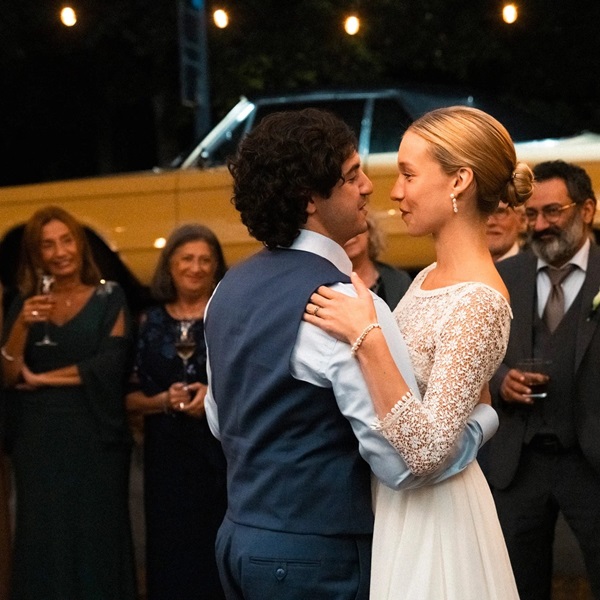As a writer, Roberto Aguirre-Sacasa, MA’97, takes pride in his ability to craft a good plot twist. But even he would be hard-pressed to come up with a narrative as unlikely as the one that has seen him become one of the driving forces behind the revitalization of Archie Comics.
You see, the company once viewed him in the worst possible light. And it all started at McGill.
While pursuing his master’s in English, Aguirre-Sacasa took part in the McGill Player’s Theatre’s annual McGill Drama Festival, a competition involving one act plays written by students.
A longtime Archie fan, Aguirre-Sacasa included the affable redhead and his Riverdale cohorts in a story he had written that also involved the notorious young murderers Nathan Leopold and Richard Loeb (the inspirations for Hitchcock’s Rope). The idea, in part, was to contrast the amorality of the killers with the sweetness of the Archie characters.
Aguirre-Sacasa’s play did well. It was also performed at the Montreal Fringe Festival. Aguirre-Sacasa developed it further. As the play attracted more attention, Aguirre-Sacasa found himself on the receiving end of a cease-and-desist letter from attorneys representing Archie Comics.
“That play got me on Archie’s radar and not in a good way,” says Aguirre-Sacasa. “I talked to the lawyer at Archie Comics and I said, ‘I understand you’re upset, but really, this is coming from a deep and abiding love for these characters and it’s my dream to one day work on these characters properly,’ and the guy basically said, ‘Over my dead body.’”
Today, Aguirre-Sacasa is the chief creative officer for Archie Comics and the person most responsible for the TV series Riverdale.
Riverdale has been described more than once as “Dawson’s Creek meets Twin Peaks.” This isn’t the Riverdale you might remember from those Archie digests you read as a kid. One of the first episodes features Archie engaging in a steamy make-out session with Miss Grundy (!) and the first season ends with someone getting shot at Pop’s Diner. In between, there are surprises aplenty (Jughead and Betty?! Cheryl Blossom’s dad did what?!).
An unexpectedly dark exploration of the Archie characters. That sounds… familiar.
“Some of my friends who’ve known me for most of my adult life watch Riverdale and say, ‘You’re still writing that play you wrote about the Archie characters 20 years ago. And you’re still wrestling with the same ideas and the same concepts,’” says Aguirre-Sacasa.
“My first response was, no, this is totally different, and then I realized, no, this is exactly what I did. The particulars aren’t quite the same, but the idea of taking the Archie comic book characters and putting them in a very different situation – that is exactly what I did with my play all those years ago.”
One thing that has changed in the time since Aguirre-Sacasa prepared his play for the McGill Drama Festival is the leadership at Archie Comics. When current CEO Jon Goldwater first took on the job, he quickly came to the conclusion that the company’s comics were predictable and stale. He wanted to shake things up. He started looking around for the right people to help him do that. Soon, Aguirre-Sacasa was again on Archie’s radar.
When Goldwater first met Aguirre-Sacasa, the latter was established not only as a playwright, but as a comic book writer (a run on the Fantastic Four for Marvel Comics among other things) and a TV writer/producer (Big Love, Glee). Aguirre-Sacasa’s first work for the company was a comic book that involved the characters from both Archie and Glee. His next Archie project would play a big role in establishing the company’s new ‘anything goes’ approach.
When the concept for Afterlife with Archie was first announced, the initial reaction was largely incredulous. A scary, somber take on zombies running amok in Riverdale? But once the comic was launched, things swiftly changed. Sales were strong and the critical response was overwhelmingly positive.
“I think it did catch people by surprise,” says Aguirre-Sacasa. “We had one of the best working artists in comics in Francesco Francavilla drawing and colouring and inking the book. It wasn’t drawn in the traditional house Archie style. It had a little bit of camp, but we treated it seriously and the story had real stakes. It was basically a hardcore horror comic.”
A few months after Afterlife began publishing, Goldwater offered Aguirre-Sacasa the chief creative officer position. A big part of the job involves finding opportunities to use the Archie characters on TV or in films and that led to Riverdale.
“I love writing for these actors. This is a group of actors I’m really happy to spend time with,” says Aguirre-Sacasa of Riverdale’s cast. “I like the idea of taking these characters and putting them in some version of a genre. Season one was a murder mystery. Season two is more of a thriller. The other thing that I really enjoy is the way that this is a show [largely] about friendship. I like writing about these friends and these friendships and relationships.”
The company has recently attracted some of the top talents in the world of comics, including Mark Waid and Marguerite Bennett, to write and draw Archie publications. A new Jughead comic, written by Canadian Chip Zdarsky, won a 2017 Eisner Award, one of the top prizes in comics, for best humour publication. There has even been talk of Girls creator Lena Dunham writing a comic about Betty, Veronica and some of the other female characters.
Aguirre-Sacasa isn’t surprised that the company is attracting these talents. He believes that Archie holds the same appeal for them as it does for him.
“There are Archie fanatics far and wide. [The characters] are very malleable. They can be dramatic. They can be funny. They can be scary. They can be slice-of-life. They can be coming-of-age. They can be adventurous. There is a certain appeal for writers and artists to come and play in this sandbox a little and see what they can do.”
And while Aguirre-Sacasa has been challenging conventions by placing the Archie characters into all sorts of different situations, he says it’s important to respect their core identities.
“For Archie, it’s a fundamental core of goodness. It’s a fundamental desire to help his family and his friends. He’s generally an optimistic kid, though he does go on a dark journey in [Riverdale’s second season].
“For Betty, the archetype is the mythical girl next door. She’s smart, resourceful, tenacious. She’s wholesome and what we’re revealing [on Riverdale] is that underneath that façade there is something else brewing. For Jughead, it’s his sardonic sense of humour. I believe there is also an inherent outsider quality to Jughead that is a little more pronounced in Riverdale than it is in the comic books. I always thought Jughead was his own island. He had a slightly skewed view of the world and a different perspective than all his friends – and perhaps was a little bit wiser than his friends. Veronica knows what she wants and she goes after it. She is fighting to be more than her stereotype – the shallow rich girl who only cares about appearances and money. Veronica is those things, but she is also so much more.”
And which character is Aguirre-Sacasa’s favourite? That would be Betty.
“I always liked her spunk. I always liked that she could fix cars. I always liked that she was a little bit of a tomboy. I just wanted her to be my friend.”


